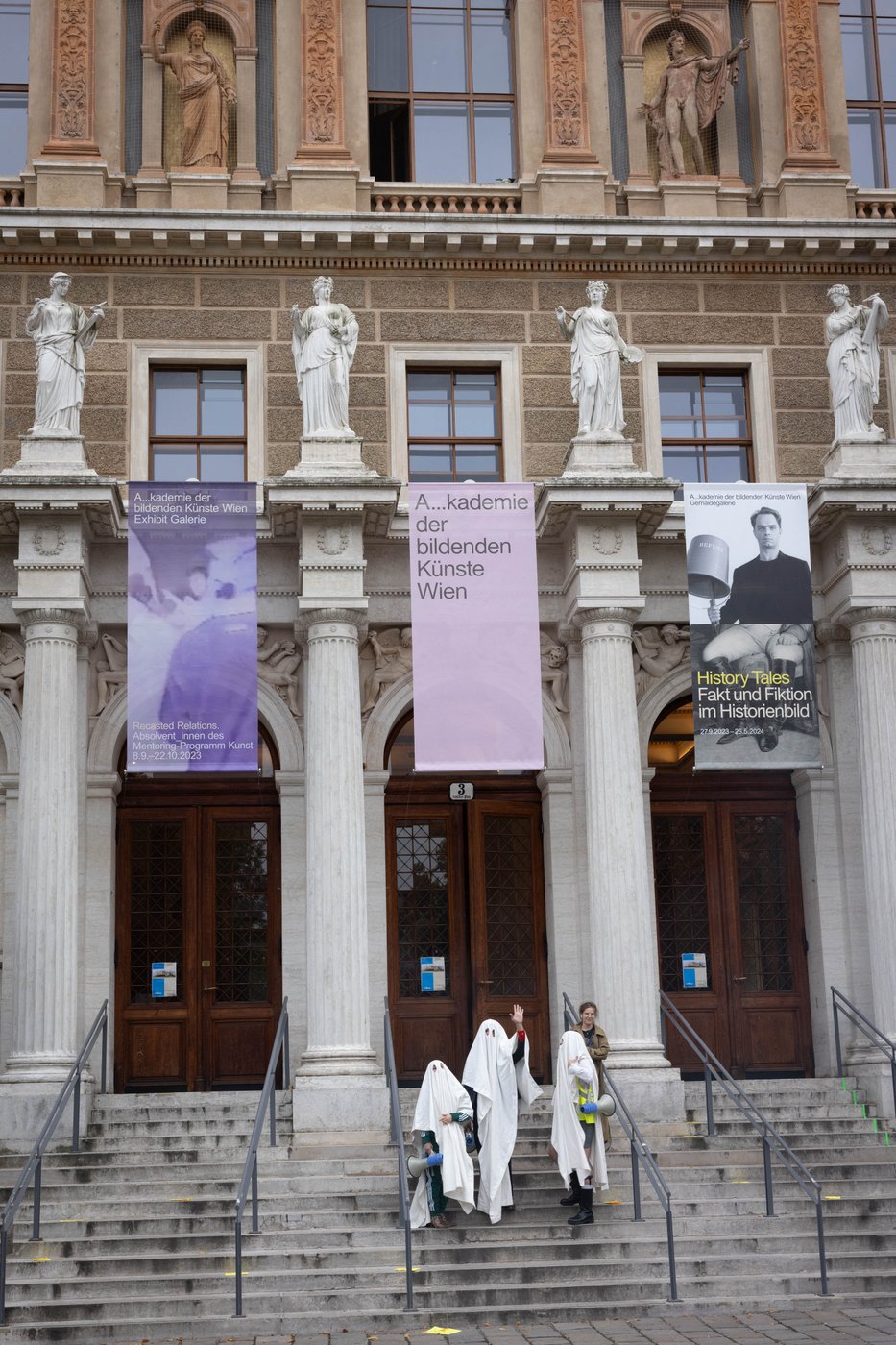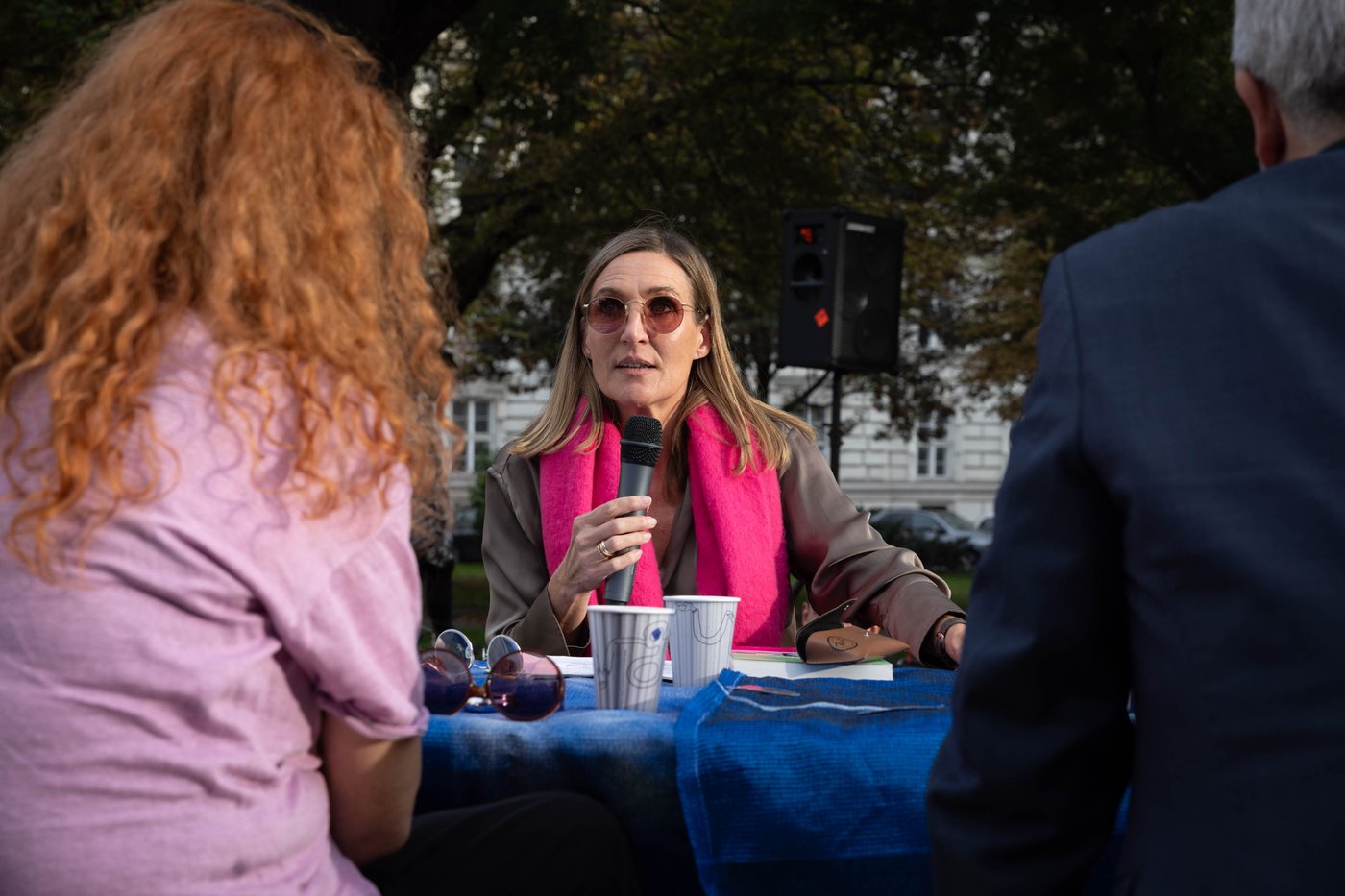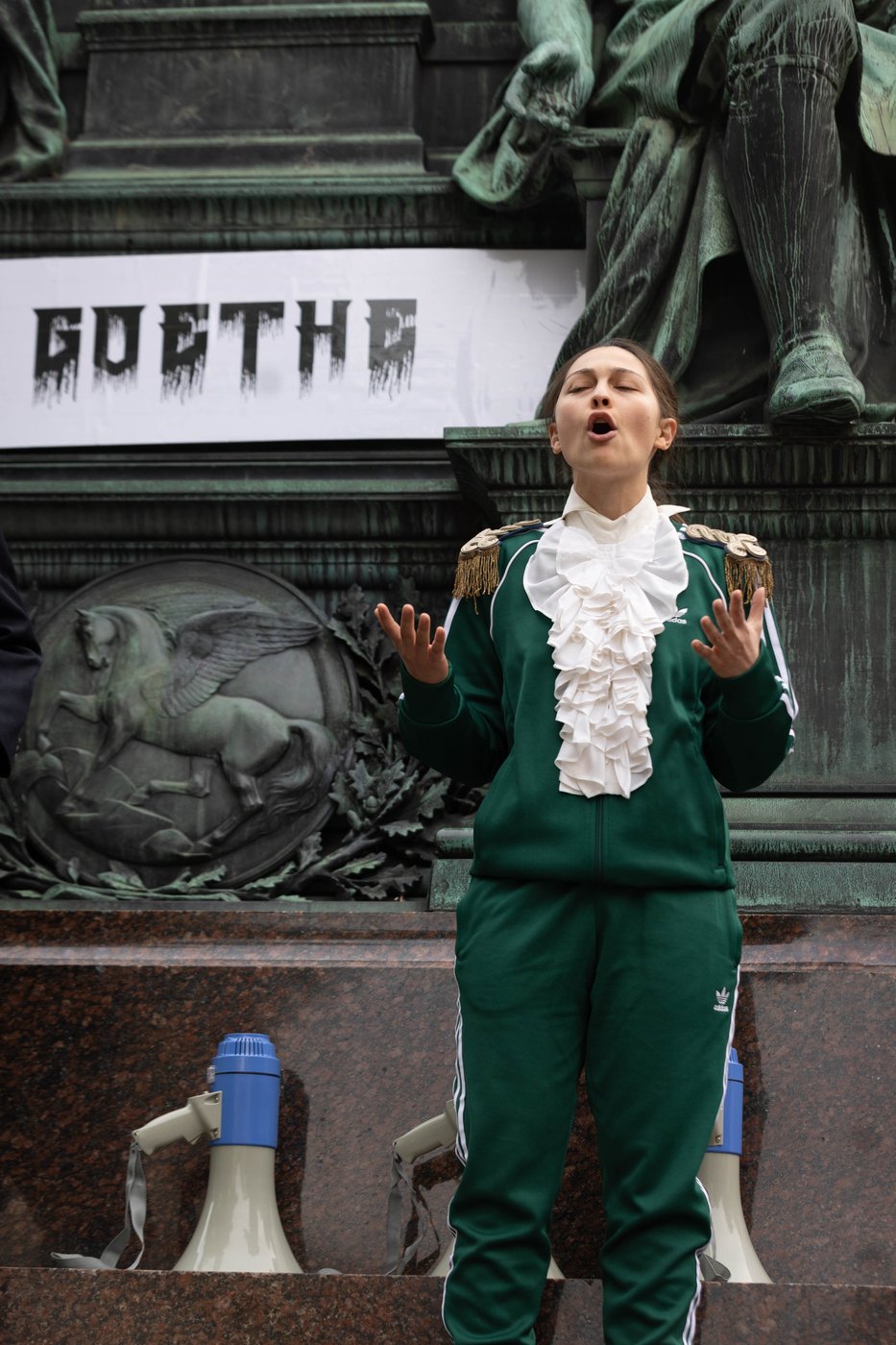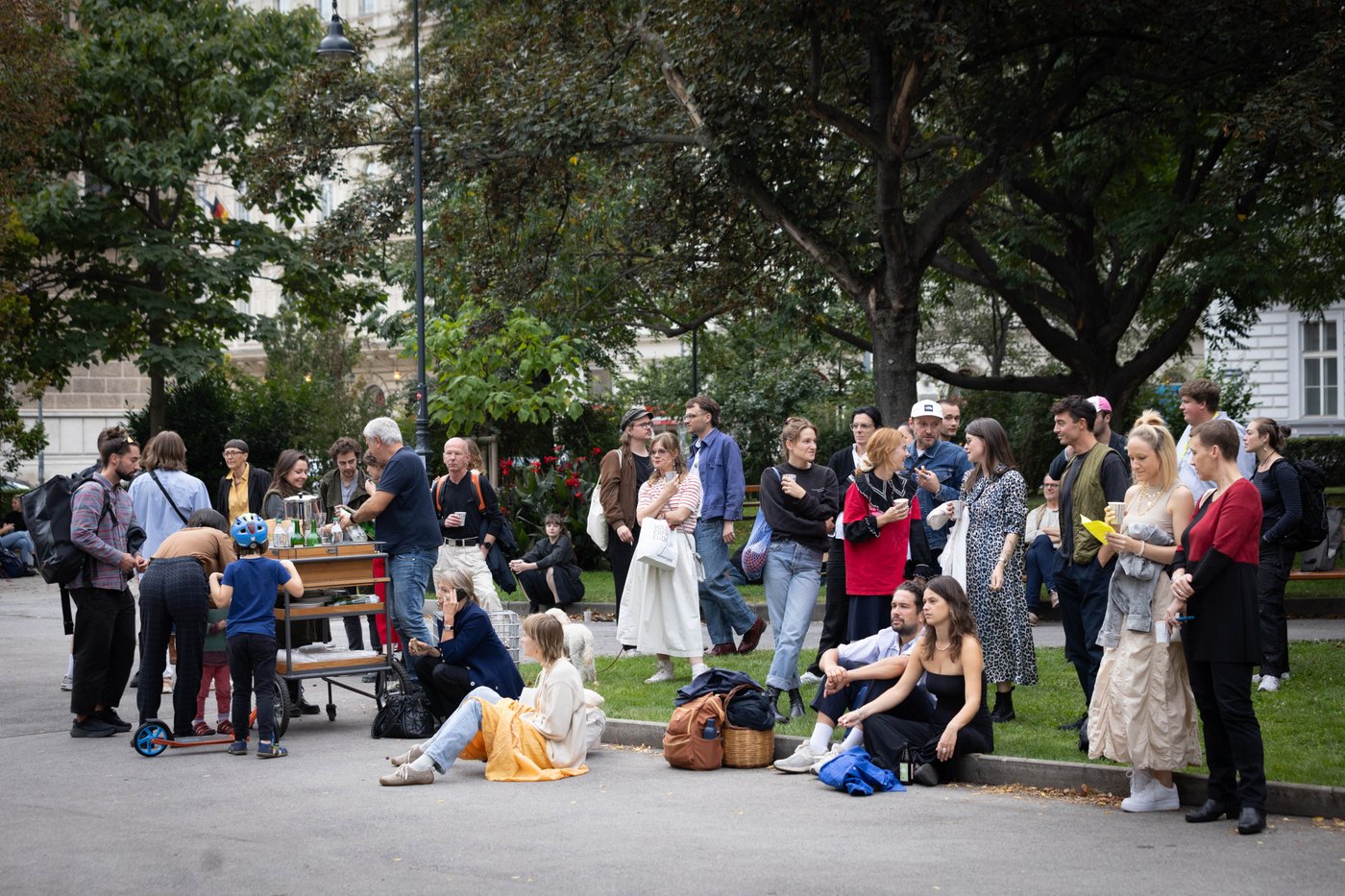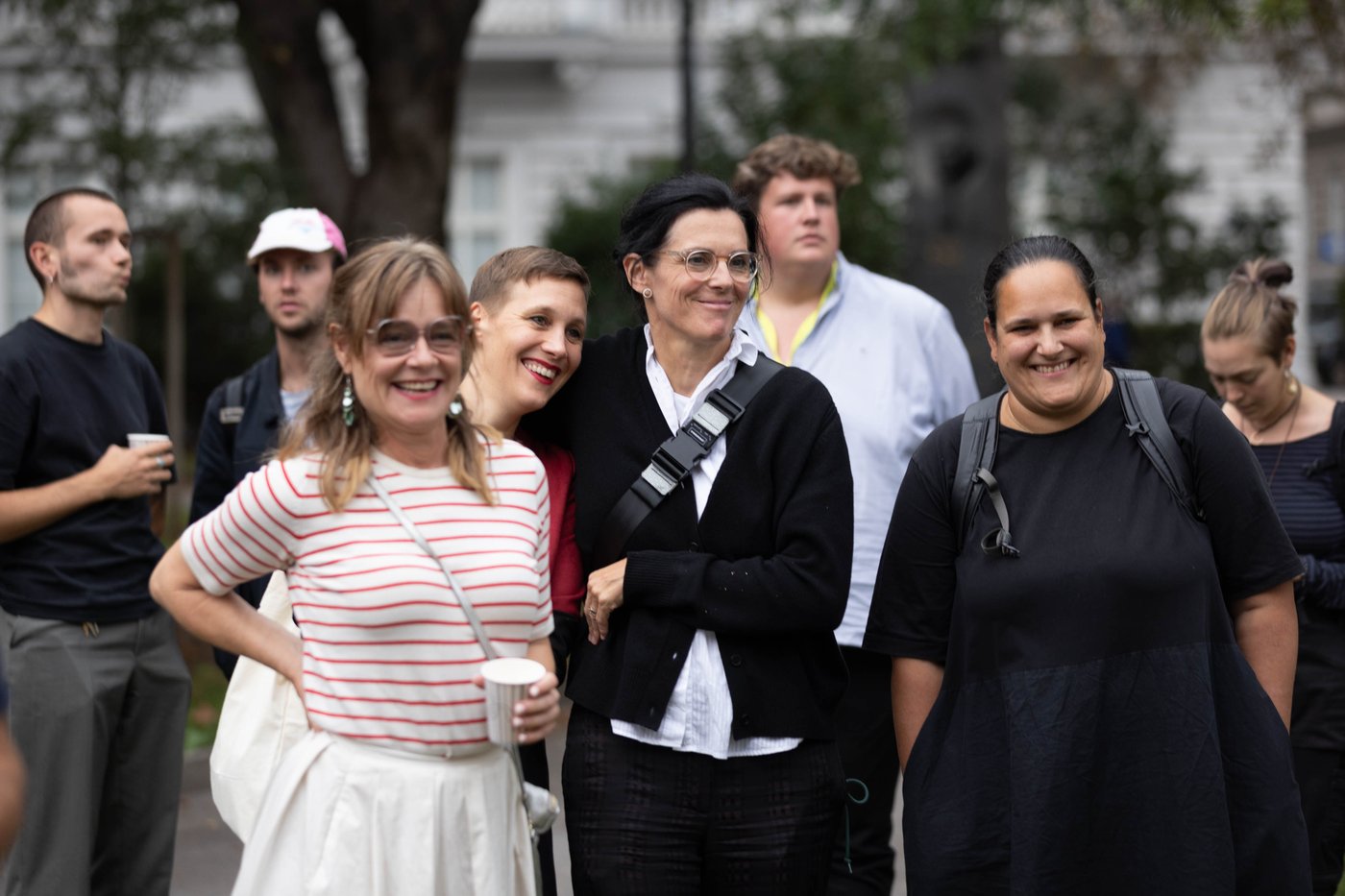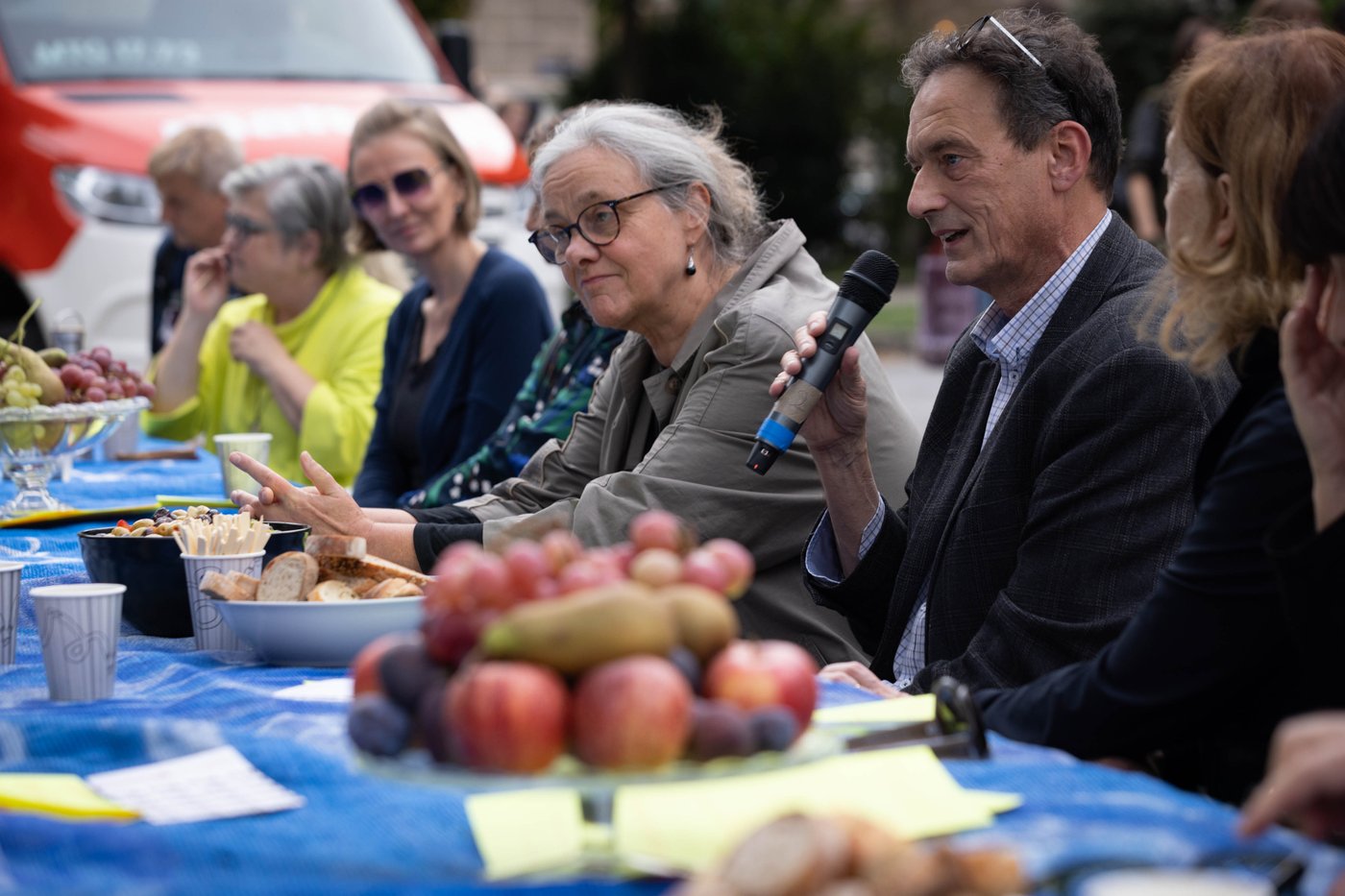Platz nehmen #1: Schiller Killer - Töte Goethe
An event of the Academy of Fine Arts Vienna in cooperation with Volkstheater Wien.
The two historical figures Friedrich Schiller and Johann Wolfgang von Goethe ignite a series of conflicts that are exemplary for the way the cultural nation deals with its burdened heritage. Together with guests, students and teachers of the academy as well as actors of the Volkstheater Wien we want to start the new series of events with these two pillar saints, with whom we are confronted as a contemporary art university in the form of monuments directly in front of the academy building, at our outdoor banquet table and invite the public to participate.
In terms of content, the coincidence of the Art Academy and Schiller - the author of the Letters Über die ästhetische Erziehung des Menschen - and, in a further axis, Goethe, who as a natural scientist was also an anarchic critic of science, describes a challenge and also an imposition. At the same time, the two historical literary figures also open up a repertoire of speaking about art and its social function, about dealing with conflicts and taboos.
On our first program afternoon of the event series Platz nehmen by Academy | Art | Public Sphere around the festive table at Schillerplatz, together with all participants and guests, neighbors and passers-by, we will this time deal with questions about our relationship to tradition, canonization, historical heritage and forms of glorification, deconstruction and criticism in different, stimulating contributions.
With scenic and discursive acts and performances by and from:
- Emil Borgeest, Student Studio Scenography
- Alice Creischer and Andreas Siekmann, Professors for Contextual Painting
- Diedrich Diederichsen, Professor of art and cultural studies
- Frank Genser, Schauspieler Volkstheater Wien
- Irem Gökçen, Schauspielerin Volkstheater Wien
- Nora Köhler, Student Studio Performative Arts
- Johanna Mitulla, Volkstheater Wien
- Katja Sterflinger, Professor Science and Technology in Art
Moderation: Johan F. Hartle, Rector Academy of Fine Arts Vienna
Composition: Lukas Katzer
Set design: Rosa De Coster, Minna Liebhart, Yann Delon-Jacquin, Students of the Studio Object Sculpture with Julian Göthe; Sandra Bayer, Felix Kofler, Mariella Lehner, Susanna Lundberg and Maria Pylypenko, students of the Studio Drawing with Veronika Dirnhofer; Maximilian Gallo, Alexander Groiss, Roxane Milena, Julian Schönbor, Johanna Seckauer, students art and architecture.
Concept:
Johan F. Hartle, Rector Academy of Fine Arts Vienna
Claudia Kaiser, Project Management Academy | Art | Public Sphere
Henning Nass, Dramaturg Volkstheater Wien
Kay Voges, Artistic Director Volkstheater Wien
Graphic Design: Beton Studio
Program
16 h
Infinite Encounter
Performance by Nora Köhler, student of the Studio Performative Art
The giant statues of Schiller and Goethe stare at each other as if they were trapped in an eternal confrontation. But the love between them hovers like a veil over the never-ending eye duel. The statues' gazes meet in an endless interplay of affection, longing and incomprehension. Between them: stagnation, the human striving for connection and the inability to move from the spot.
Nora Köhler's performance, which she had already shown in 2019 as part of the summer showing of the Performative Arts Studio at Schillerplatz, is an experiment, an attempt to overcome the limits of statues.
16:15 h
Schillerplatz
Impuls lecture by the rector Johan F. Hartle
It is no coincidence that the Academy of Fine Arts Vienna stands on Schillerplatz. With his letters Über die ästhetische Erziehung des Menschen, Schiller wrote a founding text of modern aesthetics and emphasized the importance of its all-encompassing social mediation. The historical model of his aesthetics is, as can also be seen in Hansen's building and Feuerbach's pictorial program, ancient Greek culture. In its reception history, Schiller, who was an honorary citizen of the French Revolution, has sometimes been turned into a German romantic nationalist and heroized in the most abysmal way. Nevertheless, Schiller has remained a cue for contemporary thinkers such as Gayatri Chakravorti Spivak and Jacques Rancière. What can Schiller still mean to us for aesthetic education? What impulses emanate from the Weimar tradition, also and especially for an age in which the fiction of bourgeoisie is fully imploding and a multitude of crises and catastrophes are imminent? The impulse lecture will put some motifs from the letters Über die ästhetische Erziehung des Menschen and from Schiller's text Über naïve und sentimentalische Dichtung into a contemporary context.
16:35 h
Das Pfirsichblüt (The peachblossom) - on Goethe's colours and the narrowness of the scientific guilds
Statement by Katja Sterflinger, professor for Natural Sciences and Technology in the Art
There are probably as many articles and opinions on Goethe's theory of colours as there are colours in the "orderly" and "disorderly" spectra. His theory of colours was ridiculed by physics, appropriated by anthroposophy, often not understood by the bourgeoisie, but nevertheless praised. One thing is certain: Goethe's work on colours is enduring, and we still talk about it today. Far before Itten and Küppers, Goethe was concerned with colour contrasts and far before Sérusier and Klee with the effect of colours on each other and their psychological impact. And: Goethe doubted Newton's colour theory - in his time, i.e. even before waves and particles found their way to each other through quantum physics and quite rightly so. Goethe did not surrender to magic for this, quite the opposite. He was a highly precise observer and experimenter and not least a rebellious science critic. So, when Goethe said of himself that "in the difficult science of colour theory he was the only one who knew what was right", we might almost grant him that.
16:50 h
GEGEN GOETHE
Scenic intervention by and with
- Emil Borgeest, student of Scenography, conception, direction and actor
- Frank Genser, actor Volkstheater Wien
- Irem Gökçen, actress Volkstheater Wien
- Johanna Mitulla, Volkstheater Wien, conception, direction
- Lukas Katzer, Volkstheater Wien, composition
Based on the pamphlet Gegen Goethe by the French writer Jules d'Aurevilly, Johanna Mitulla, Irem Gökçen and Frank Genser from the Volkstheater Wien and Emil Borgeest from the Academy of Fine Arts Vienna invite to a spectacle on Schillerplatz. Between the statues of Goethe and Schiller, these men of stone will be challenged by the performers to a duel, focusing on the question of what a confrontation with a time long gone can look like and what can thereby happen to the present or the universally feared future.
" Ernst ist das Leben, heiter ist die Kunst" (Serious is life, joyful is art). Exactly. So witness a (perhaps) unprecedented spectacle that aims to make time run backwards, evoke ghosts and overcome gravity.
17:20 h
Introduction of the new professors for the Studio Contextual Art:
Alice Creischer and Andreas Siekmann
Conversation with the rector about their practice of art in public space
17:35 h
The canon of the poor
Lecture by Diedrich Diederichsen, professor for Arts and cultural studies
Goethe and Schiller do no longer represent taste and education for the established middle and upper class. Those who still carene cares about them and the German speaking classicists are specialists, scholar, theatre people. The canon of the educated class can be located between (at best) Kafka and T.C.Boyle. Goethe and Schiller instead are names for education and taste and one's exclusion from that world by the underclasses, those who did not receive an education. These people are adressed by the monuments and they tell them: you are not wanted here. From time to time they tale revenge by satirical songs - and that and people like Rudi Carrell and Judge Dread will be the subject of this talk.
18 h
End and fade out





